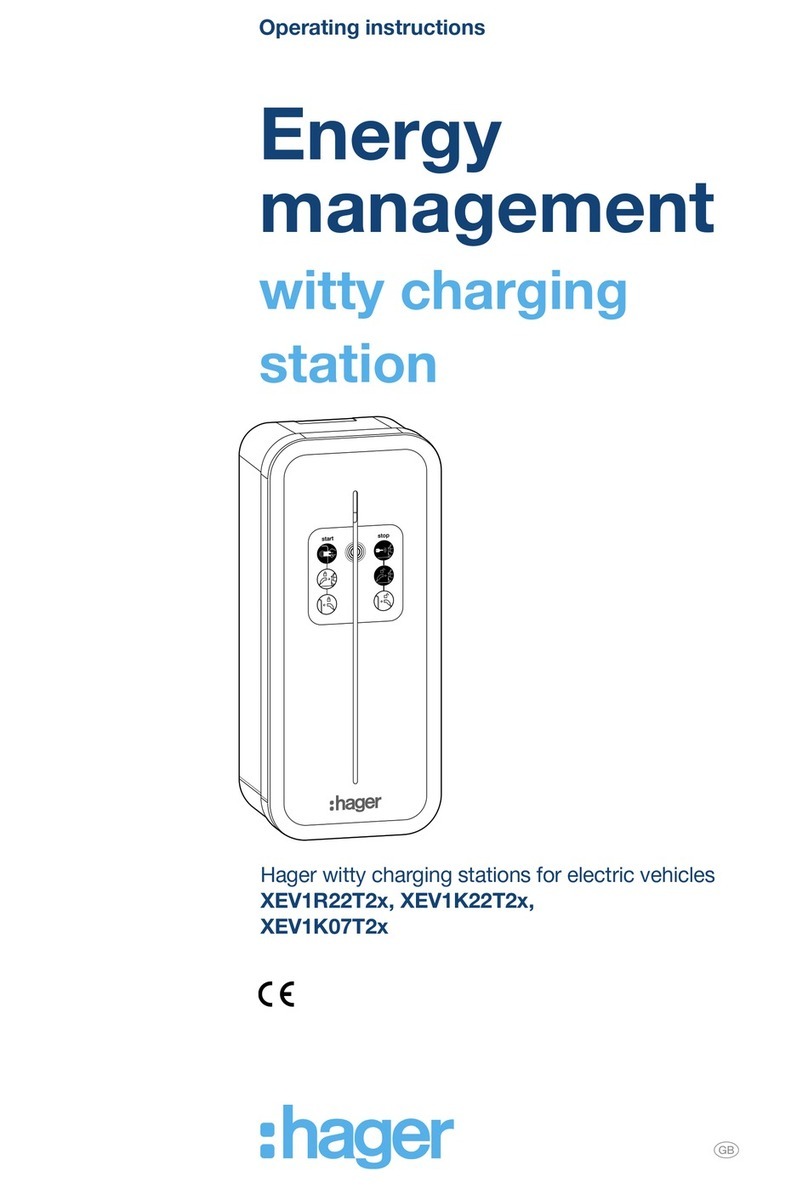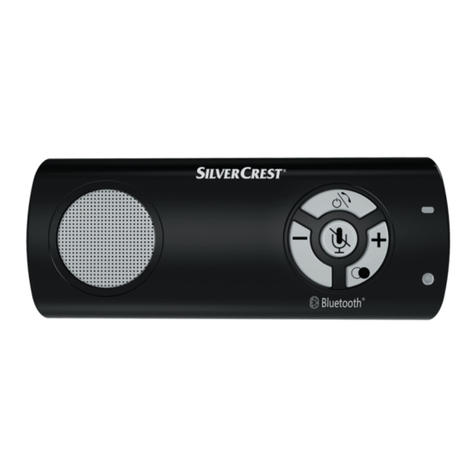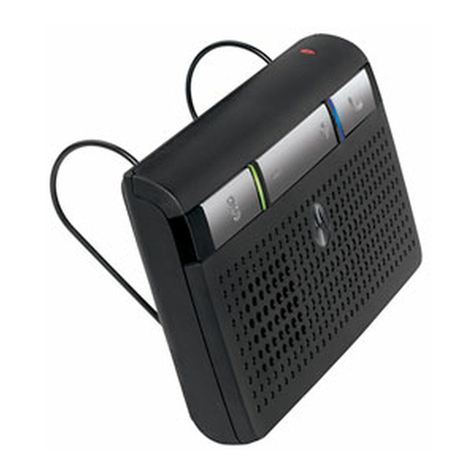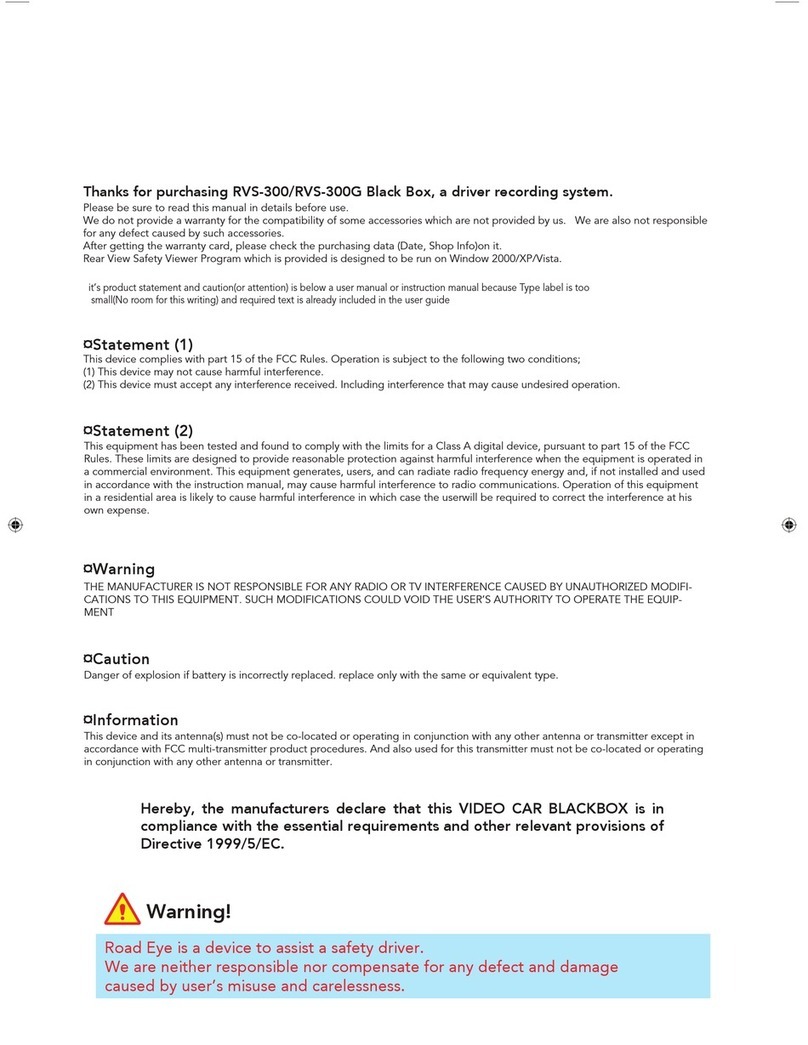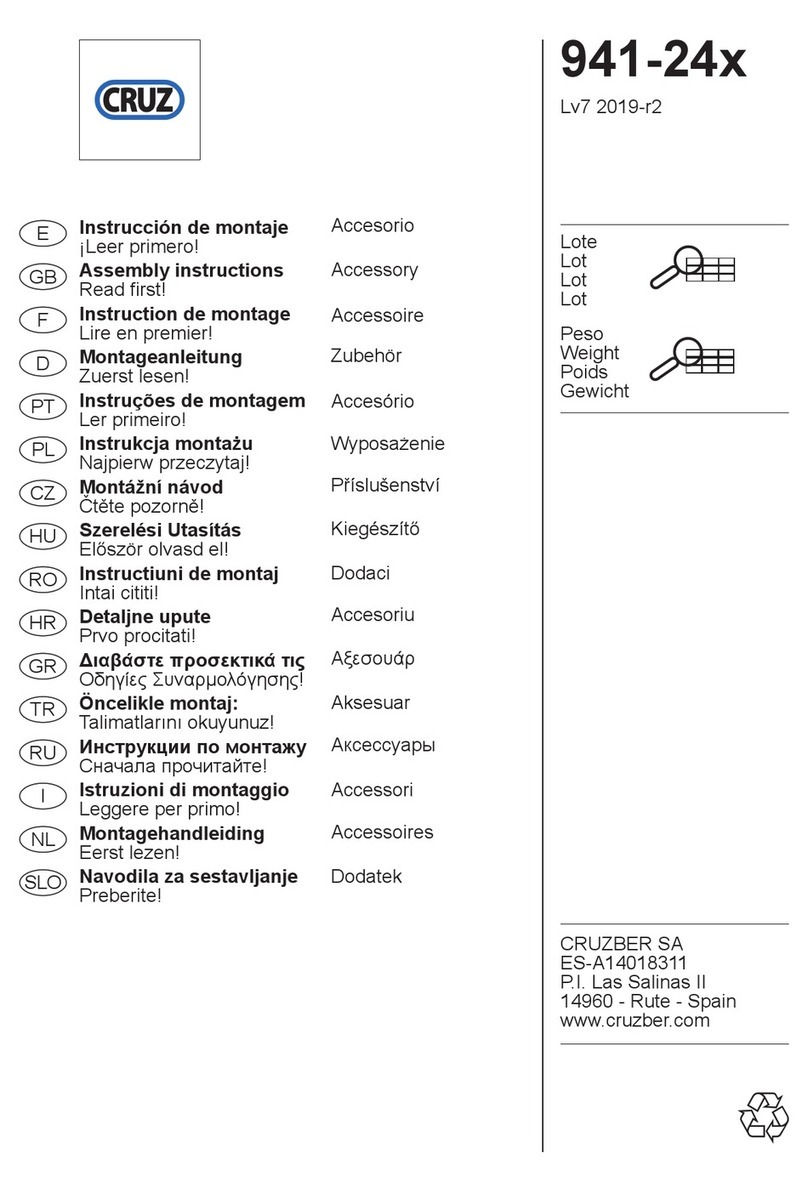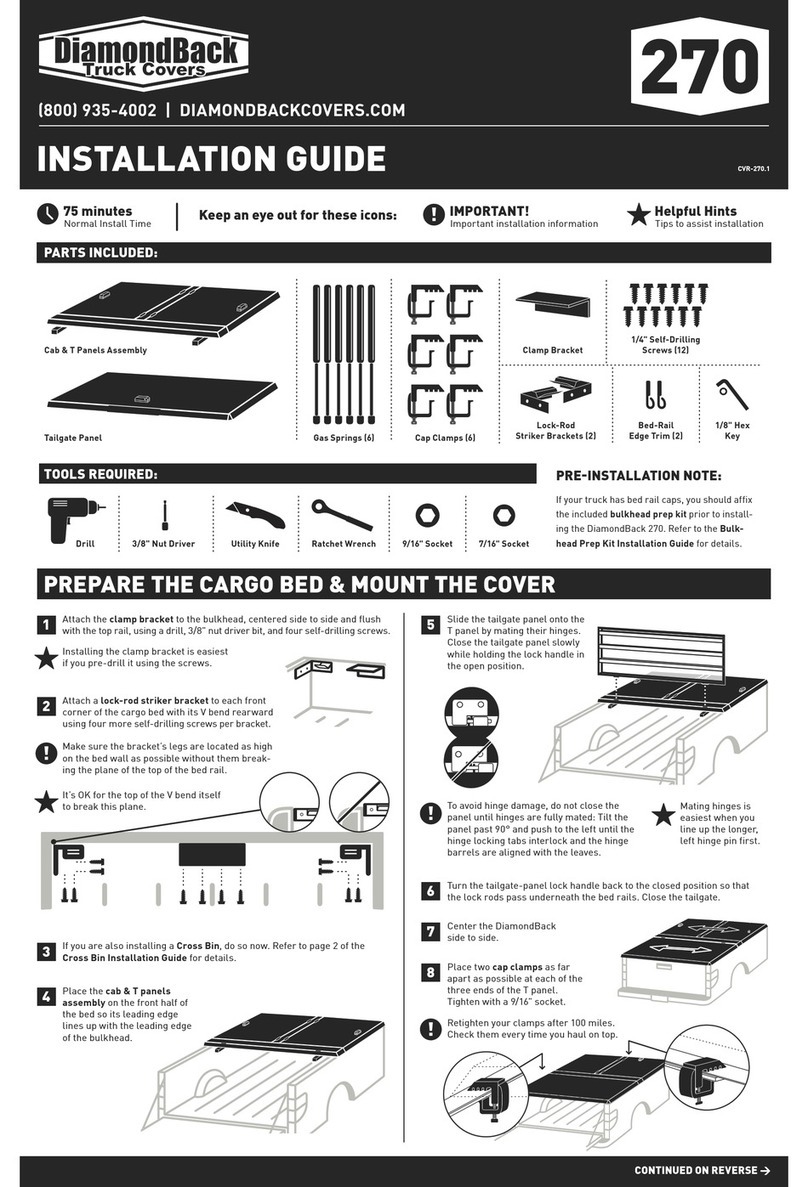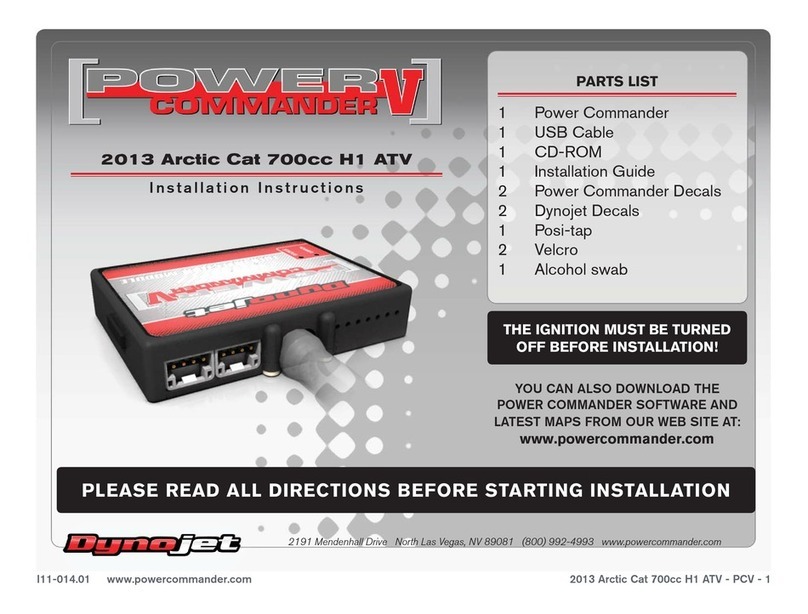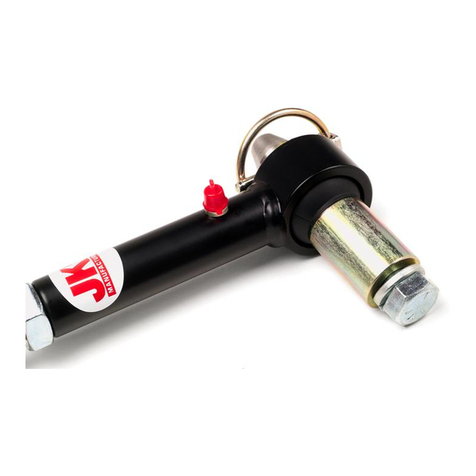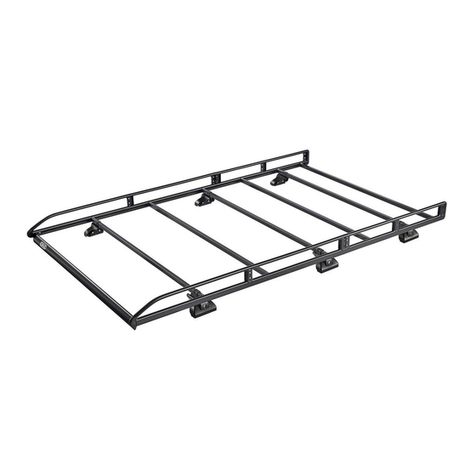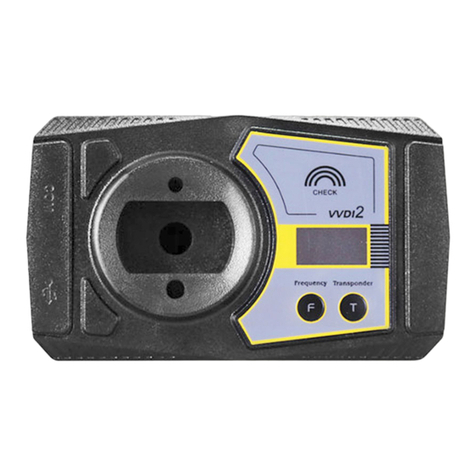hager witty park XEV6 Series User manual

Hager witty park XEV6xx
6LE002957D
6LE002957D
1
zInstallation manual
1. Initial precautions
Please refer to the maintenance manual before starting the installation of the charging station. The device is to be installed only by a professional electrician
fitter according to local applicable installation standards. Conform to SELV installation rules.
2. General description
Strip light
RFID Card Reader
Socket: Mode 3 Type 2S
Socket: Mode 2
Optional: integration of a modem
Energy meter (version-specific)
The outer casing can be removed
by unscrewing two screws
Optional: base
Optional integration of a protective casing

6LE002957D 6LE002957D
3. Electrical components of the charging terminal
The inner cabinet, depending on the version, comprises the following parts:
4. Attachment and connection
a. Diagrams for wall drilling without wiring space at the rear
Contact detection fixed on the contactor
Controller
MID energy meter (version-specific)
Grommet plate
Controller power supply
Terminal blocks
Plug N°3 M3T2S socket (lockable)
Plug N°1 M3T2S socket (lockable)
Plug N°4 M2TE socket
Plug N°2 M2TE socket
Circuit breakers
Power contactors
713
765
1300 max
480
330
202
355
233
87
50
1395 max
235
4x (not included)
ø 11
=
TCP/IP Board (version-specific)
2 3

6LE002957D 6LE002957D
b. Diagrams for wall drilling with wiring space at the rear for XEV427 c. Floor mounting diagrams for XEV426 + XEV428
Terminal
Installation Area
713
1472
765
480
1239
330
1089
202
202
175
355
355
1300 max 233
87
50
1395 max
435
235
ø 8.5
54
4x (not included)
2x 2x
+➞ ➞
➞
➞
➞
=
175
110
325
650
325
70
350
250
190
250
500
250
Foundation
C20/25, X0 Depth
80 cm
Bedding Layer
5 cm, C8/10
XEV427
XEV426
In case of a chemical seal, use
threaded rods with diameter of 12 mm.
XEV428
4 5

6LE002957D 6LE002957D
5. Electrical installation
a. Power supply
Power terminal block (230V/32A) for rigid cable of max. 10 mm².
Control terminal blocks of transmitter coils for rigid cable of max. 1.5 mm².
Power supply terminal block (230V) of the controller for rigid cable of max.
1.5 mm².
Upstream protection for controller power supply: Circuit breaker 16A, C
curve
b. Maximum power load
The maximum power load is determined using the encoder wheel that can
be turned to the desired amperage.
If the LED indicator light is a solid red, turn off the power, wait for 15
seconds and then change the position of the encoder wheel to an
authorised threshold.
Then, turn on the terminal: a steady green light should light up.
N
Three-phase power
supply 1
(-X1/-X2)
Controller power
supply
MZ203 Trigger circuit
connection
(-X3)
Three-phase power
supply 2
(-X3/-X4)
L1 L2 L3 N L1 L2 L3N
LST
N
LST
-X0.1 -X0 -X0.3 -X3/4
MZ203 trigger circuit
connection
(-X1)
N
L
Wiring diagram (version-specific)
Maximum
charging
rate
3-phases station 1-phase station
6 A
Not authorised by ZE Ready
1.2
Not authorised by ZE Ready
1.2
10 A
13 A
16 A
20 A
25 A
32 A
40 A Prohibited for the electrical safety of the terminals
50 A
63 A
y
o
PIN
➞
➞
➞
➞
The terminal MUST be mounted
on its base BEFORE if used
attaching the vector cabinet.
The equipotential bonding
must be established between
the terminal, foot and base.
O
6 7
* Earthing point to connect to
the earth system
*

6LE002957D 6LE002957D
d. Earthing quality according to the ZE READY 1.2 label
e. Contact detection fixed on the contactor in accordance with the ZE READY 1.2
All Witty stations with a nominal power load of more than 3.6 kW are equipped with a contact detection mechanism fixed on the contactor.
NOK
IT
neutral
point
connection
TN or TT neutral point connection
OK
neutral
point
connection
neutral
point
connection
neutral
point
Max.
50 Ω
Max. 50
Ω for
the 5
stations
Max. 5
stations on
1 earthing
connection
Interconnection
c. Protections
Single-phase
Electrical cabinet Station
Protection integrated
in the electronic
board
Power
> 4 kVA
only
MZ203 transmitter coils
Fault detected
=
Information via solid
red indicator light for
3 seconds +
Disconnection from
network
ZE READY 1.2
Disconnection from network
if contact is fixed
Rigid cable 4 x 1.5 mm2
NOK
NOK
NOK
OK
OK
OK
Three-phase
N
LST
N
LST
-X0:1 -X0:3
40 A
C curve
30 mA
type A
40 A
C curve
30 mA
type A
40 A
C curve
30 mA
type B
40 A
C curve
30 mA
type B
protections
for the
controller
supply
protections
for the
controller
supply
protections
for the
controller
supply
protections
for the
controller
supply
protections
for the
controller
supply
*
**
8 9
MZ203
MZ203
MZ203

6LE002957D 6LE002957D
6. Charging station software configuration
Before using the configuration software, please refer to the charging station installation manual. Device to be installed and configured only by an electrical
installer according to the installation standards applicable in the country.
The charging station is equipped with a web configurator to configure it. By default, the charging station is configured as a “DHCP client” and, as a result,
requires a router with a “DHCP Server” function to operate within the LAN.
If the charging station does not detect the DHCP server, it automatically assigns a fixed IP address (by default: 192.168.0.101), which can be set in the
software configuration.
a. Web server access
There are several ways to access the charging station configurator. The configurator is compatible with different screen sizes, such as a laptop, tablet or
smartphone.
a.1 Via the charging station name (HostName)
The web server can be accessed directly by entering the address of the charging station name (Host name) in the web browser. The exact address is specific
to each charging station, indicating the last 6 characters of its UID code specified on the communication board in the charging station.
Address format: https://hager-evcs-[6Last_caracters_UID.local]/ (example: https://hager-evcs-ab4df5.local/). Except android version<12 (preferred way using
IP address)
a.2 Via its IP address
The web server can be accessed by entering the charging station’s IP address in the web browser. The charging station’s IP address can be detected using
an “IP Scanner” third-party application or if the charging station does not detect the DHCP server using its fallback IP address after 120 seconds (default:
https://192.168.0.101)
You can restore the default ip configuration with the below procedure:
• Switch off the charging station
• put the rotary wheel on 9
• switch on the charging station
• wait 30 sec
• put off the charging station
• put the rotary wheel on the chosen value
• switch on again the charging station
The charging station could be set in DHCP server mode with the procedure below:
• Switch off the charging station
• put the rotary wheel on 8
• switch on the charging station
• wait 30 sec
• put off the charging station
• put the rotary wheel on the chosen value
• switch on again the charging station
b. Identification page
The configurator is protected by a user name and password. By default, these credentials are:
User name: admin
Password: #HagerXEV60x
When connecting for the first time, you will be asked to change the password to a “strong” password.
You can change the password in the configurator. If you lose these credentials, you can reset them to the default value with the below procedure:
• Switch off the charging station
• put the rotary wheel on 9
• switch on the charging station
• wait 30 sec
• put off the charging station
• put the rotary wheel on the chosen value
• switch on again the charging station
c.1 Standalone mode
When the charging station is configured with the “Standalone” setting, the charging station will run without OCPP communication.
The badge management is done through the local configurator.
10 11
c.2 OCPP configuration
Enables configuration of the connection to an OCPP server (to be retrieve from the CPO).
• OCPP server: OCPP server address
• Authentication: authentication method for the OCPP server
• Login: OCPP user name
• Password: OCPP password
• ChargePoint ID: charging station user name (minimum 1 character, by default : serial number of the charging station)
c.3 OCPP mode
4 different mode are available :
• Full OCPP (by default): the CPO will get all the charging sessions data and will do the RFID cards management
• Free access OCPP: the CPO will get all the charging sessions data but the RFID cards aren’t required in order to start a charging session.
• Standalone Park: The charging station isn’t supervised by a CPO and will manage the RFID cards via the “Whitelist”.
The Whitelist can be completed manually by entering the RFID badge credentials, imported via a .txt file, or learned by enabling the
“Add by scan” mode and swiping the badges on the charging station’s RFID reader.
• Standalone Home: The charging station isn’t supervised by a CPO and will be in free access.
c.4 Network
Enables configuration of the network
• DHCP client: (by default) connects to a DHCP server or assigns a fixed IP (if no DHCP server, fallback IP address will be active after 120 seconds)
• IP address: defines the fixed IP
• Fallback IP address: defines the IP if there is a DHCP error
c.5 Physical installation
Enables the charging station configuration to be completed.
• Phase rotation: enables the metering information to be fed back per phase on the correct phase, should the charging station not be supplied in the
standard sequence of phases (default value : L1-L2-L3).
• CHP: Physical input 24 VDC which allow to do load shedding.
-If the setting is at 0 (default value), the activation of the input will reduce the charging session to the minimum (depending of the EV41 setting).
-If the setting is at 1, the activation of the input will stop the charging session.
• D/N behaviour: Physical 230V input which allow.
-If the setting is at 0 (default value), the charging station will start to charge immediately.
-If the setting is at 1, the charging station will authorize the charge when the “D/N activation mode” will be at “night”.
-If the setting is at 2, the charging station will reduce the charging session to the minimum (depending of the EV41 setting) when the “D/N
activation mode” will be at “night”.
-If the setting is at 3, the charging station will suspend the charging session when the “D/N activation mode” will be at “night”.
• D/N activation mode:
-If the setting is at 0 (default value)-> 230V = Night / 0V = Day
-If the setting is at 1 -> 0V = Night / 230V = Day
• D/N activation delay: time after when the “night” value will be taken in account (only if day/night setting is activated).
From 0…1440 min (Default value = 0)
• D/N inclusive and exclusive: this setting is only available if the parameter “D/N behaviour” is at 1.
Inclusive = 0 (Default value)
The charge is authorized when transition Day -> Night (Depends on D/N activation mode).
Once authorized, the charge will continue until the car is unplug.
Exclusive = 1
The charge is authorized when transition Day -> Night (Depends on D/N activation mode).
The charge is deauthorized when the input goes from Night -> Day (Depends on D/N activation mode).

6LE002957D 6LE002957D
Not used = 0
D/N Behaviour
D/N = 1
Starts / Stops charging
Load shedding mimi = 2
Load shedding at Night
Load shedding 0 A = 3
Load shedding at Night
D/N input never used
No parameters to set
D/N Delay (0..1440)
D/N Activation mode
D/N Behaviour
D/N Activation mode
D/N Activation mode
Exclusive
Start charging at Night
Stops charging during the day
230 V = Day
0 V = Night
0 V = Day
230 V = Night
230 V = Day
0 V = Night
0 V = Day
230 V = Night
Inclusive
Starts charging at Night
230 V = Day
0 V = Night
0 V = Day
230 V = Night
c.6 Advanced functions
• Tethered cable: The charging station will adapt its behaviour as it has a tethered cable.
• Charge delay after blackout: defines delay before a charge restarts after a blackout (1 to 600 seconds). If 0, random delay between 5-120 seconds.
• Indoor/outdoor: If outdoor is set, the charging station will ignore the EV ventilation request. If indoor is set, the charging station will stop the charge if the
EV request ventilation.
• EV41: Setting that allow to start a charging session below 7A in single phase and 13A in three phases.
If the setting is EV41 is disabled = 0 (Default value):
mini current for one / three phase = 6A
Calculate the reactive current
In case reactive current > 2.5A (EV41 requirement), the charge stop
StatusNotification with OCPP status = SuspendedEVSE to indicate that the current is too low and MUST be increase.
If the setting Zoe_ph1 = 1 is set:
mini current for one phase = 7A
mini current for three phase = 13A
If the setting Zoe_ph2_kangoo_twingo = 2 is set :
mini current for one phase = 6A
mini current for three phase = 7A
c.7 Sub-metering
Two MID meters are integrated in the charging station. They are communicating through modbus RTU with the communication board. Address 1 is set two
the left side meter and address 2 is set for the right side meter.
12 13
7. HMI
Status Colour
Station is ready Green
Charging
Green breathing
Charging management - lowering the power during a session
Charging management - External signal - temporary charge stop (D/N INPUT)
Extended charging (interrupted charging, lowered power, etc.)
Charging management - load shedding during a session
Fault - Power failure Off
Reservation Solid purple
Fault - Defective cable - coding resistance absent or out of normative tolerance
Fix red
Fault - Defective communication between station and EV - Short circuit between CP and PE (CP = 0V - State E)
Fault - 4x EV over-consumption - The EV charges at too high current (4x in the same charging session)
Fault - Ventilation required - The EV requires a ventilation of the charging room
Fault - Defective communication between station and EV - diode error (connection to something other than an EV)
Fault - Invalid badge Red/white 3 time then green fix
Fault - Charging rate on 6A in single-phase
Fix red
Fault - Charging rate on 10A in three-phase
Fault - Charging rate on 6A in three-phase
Locking of the socket + awaiting charging authorisation Cycle blinking green / empty
Awaiting charging authorisation
Awaiting cable disconnection Blinking green / empty
Pause EV charging Blinking 0,25s green / 0,75s empty

6LE002957D 6LE002957D
8. Malfunction
9. Electrical maintenance
As is the case for any other fixed electrical
installation, it is important to verify the quality of the clamps at the various connection points of the installation
during the annual inspection. They must be in line with the following torques:
Indicator
light
red
flashing
Circuit breaker:
2 N.m
Meter:
2 N.m
PE/L1/N:
0.8 N.m
Contactor:
0.4 N.m
PE/L1/L2/L3/N:
1.2 N.m
CP/PP:
0.4 N.m
Contactor:
3 N.m
M2 Assembly:
0.5 N.m
Assembly
M3T2S:
0.6 N.m
Tightening torques
14 15
10. Technical data
Environmental conditions
Operation temperature -25°C to +40°C
Storage temperature -25°C to +50°C
Humidity 5% to 95%
Protection IP 54 – IK 10
Location of operation Indoor and outdoor use and installation
Operating altitude Maximal installation altitude : 2000m
Electrical characteristics
Rated voltage (Un) 230V~ (1-phase Version)
230/400V~ (3-phases Version) +/- 10%
Rated current of the assembly (Ina) 2x32A
Rated current of one circuit (Inc) 32 A
Rated operational voltage (Ue) 230V
Impulse withstand voltage (Uimp) 4 kV
Insulation voltage (Ui) 230V~ / 400V~
Frequency (fn) 50 Hz +/- 1%
Maximum power load 7kW (1-phase Version) / 22kW (3-phases Version)
Class of electrical protection Class 1
Socket outlet Mode 3, T2S
Domestic socket Mode 2
Overvoltage category III
Mechanical characteristics
Weight 30 kg
Height 765 mm
Breadth 355 mm
Depth 202 mm
Product consumption (no vehicles connected) 6,4 W
RFID frequency 125 kHz/2.4GHz
Pollution degree 3
11. Precautions for assembly
All information pertaining to the installation (assembly, electrical connection and configuration), connection to the servers as well as the use and maintenance
of the terminals are provided on the Hager website of your country.
Please refer to the maintenance manual before starting the installation of the charging station. The device is to be installed only by a professional electrician fitter
according to local applicable installation standards. Conform to SELV installation rules.
In case of malfunction, the LED will be solid red. The description of the error is available in the diagnosis
tab in the charging station configurator.
EV supply equipment permanently connected to AC supply network.
Equipment for locations with restricted access and with non-restricted access.
Stationary equipment.
Surface mounted in wall and pole
Horizontal installation on ceiling or floor is not permitted
No removable parts without tools.

6LE002957D16 HagerEnergy GmbH Group - Ursula-Flick-Straße 8 - DE-49076 Osnabrück Hager 04.23 -
Usable in all Europe Mand in Switzerland
Correct Disposal of this product
(Waste Electrical & Electronic Equipment). z
(Applicable in the European Union and other European countries with separate collection systems).
This marking shown on the product or its literature indicates that it should not be disposed with other household waste at the end of its working life. To prevent possible harm to
the environment or human health from uncontrolled waste disposal, please separate this from other types of wastes and recycle it responsibly to promote the sustainable reuse of
material resources.
Household users should contact either the retailer where they purchased this product, or their local government office, for details of where and how they can take this device for
environmentally safe recycling.
Business users should contact their supplier and check the terms and conditions of the purchase contract. This product should not be mixed with other commercial wastes of
disposal.
Information about adapter requirements according to IEC61851-1:
Vehicle adapters must not be used to connect a mobile vehicle plug to a vehicle connector socket.
Adapters placed between the EV socket and the EV plug should only be used if they have been specifically designed and approved by the vehicle
manufacturer or the manufacturer of the EV power system and meet national requirements.
These adapters shall meet the requirements of this Standard and other relevant standards governing the parts of the adapter corresponding to
either the EV plug or the EV socket.
Adapters shall be marked to indicate their specific conditions of use The adapters shall be marked to indicate their specific conditions of use
permitted by the manufacturer, e.g. the IEC 62196 SERIES.
These adapters should not allow switching from one mode to another.
Ventilation supported
'Assembly, installation and configuration of electronic devices may only be carried out by an electrotechnically trained and certified specialist in
accordance with the relevant installation standards.
Trained and certified specialist in accordance with the relevant installation standards of the country.
"All circuits must be installed completely in the same structure (from an electrical point of view) of the building."
After Servicing, maintenance or setting, the front cover need to be put back in place.
For use by ordinary and authorized persons.
Electromagnetic compatibility classification: other than residential (commercial, light industrial and industrial).
Enclosed assembly.
EVSE type: ACSEV
- locations with restricted access or non-restricted access
to be supplied with copper conductor only
Other manuals for witty park XEV6 Series
1
This manual suits for next models
1
Table of contents
Other hager Automobile Accessories manuals
Popular Automobile Accessories manuals by other brands
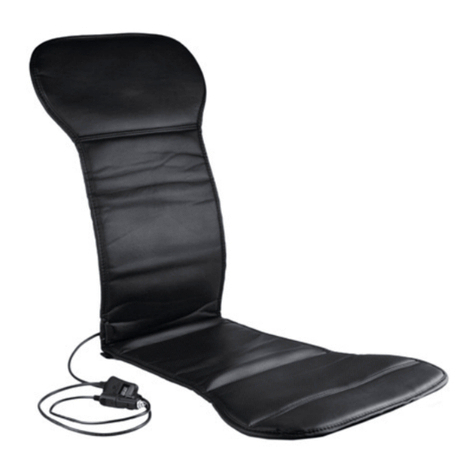
Health Mate
Health Mate 9449 user manual
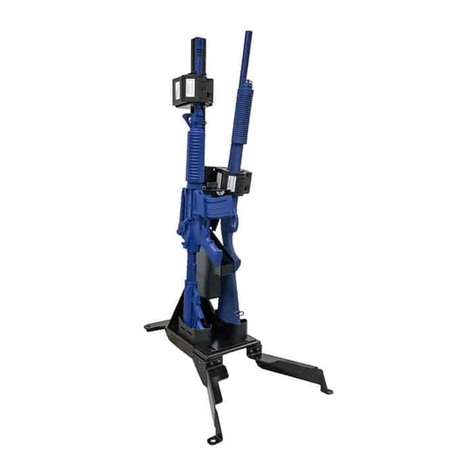
Pro-gard Products LLC.
Pro-gard Products LLC. GVM8116FT installation guide
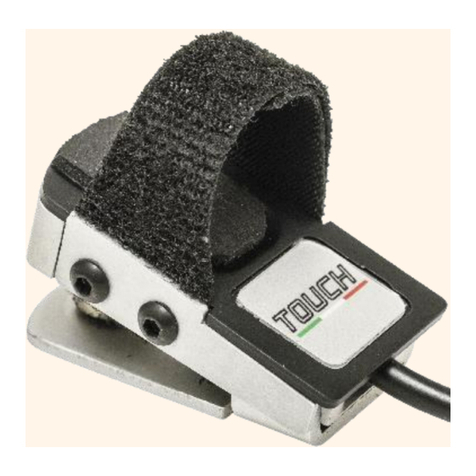
HandyTech
HandyTech HT-TOUCH EVO user manual

Air Lift
Air Lift 1000 installation guide
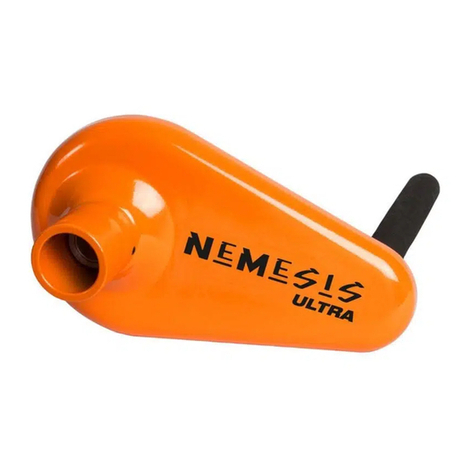
Purpleline
Purpleline FullStop Nemesis Ultra FNU200 Installation guide and user's manual

Air Lift
Air Lift 75670 instructions
